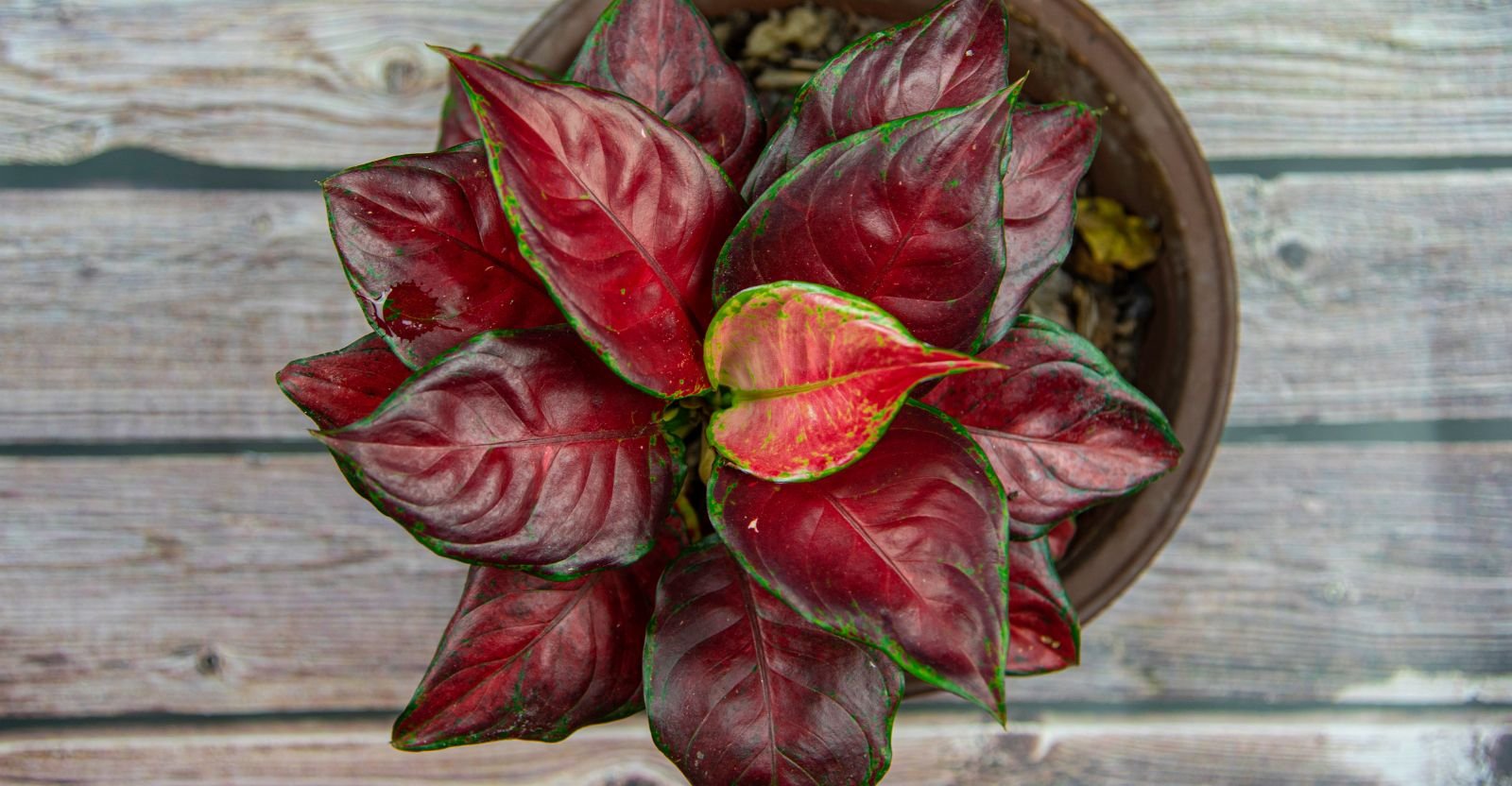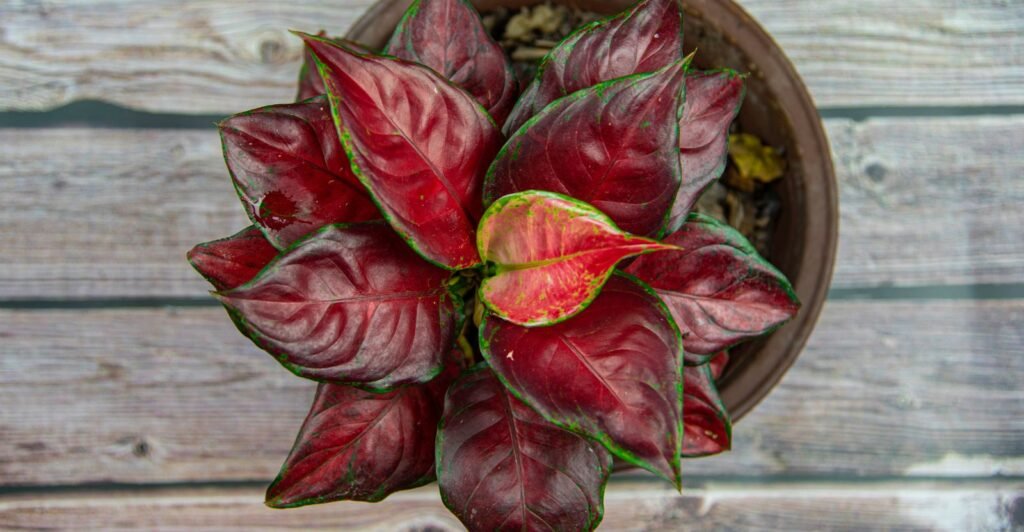
The Aglaonema plant, commonly known as the Chinese evergreen, is a popular choice for indoor gardeners due to its beauty, ease of care, and air-purifying qualities. Whether you’re a beginner or a seasoned gardener, Aglaonema is a perfect plant to grow because it doesn’t require much light, water, or maintenance, making it ideal for those new to gardening.
If you’re looking for a low-maintenance yet striking plant to add to your space, the Aglaonema is a great option. Let’s dive into everything you need to know about how to grow and care for this beautiful houseplant!
What is Aglaonema?
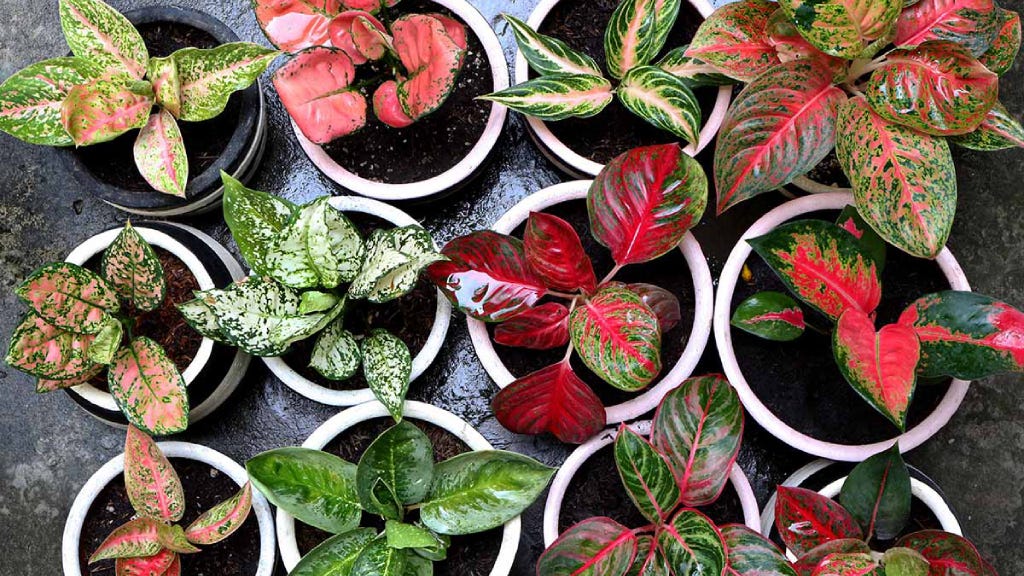
Aglaonema, or Chinese evergreen, is an evergreen indoor plant that’s known for its variety of attractive, variegated leaves. Its botanical name is Aglaonema commutatum, and it’s a perennial plant, meaning it can live year after year. Native to Southeast Asia, this plant is known for its glossy, dark green leaves, and it thrives in indoor environments.
There are around 20 different species of Aglaonema, and it’s often called the Indian laurel or Philippine evergreen, among other names. The plant is also known for being a good air purifier. Some varieties of Aglaonema, like Silver Queen, even produce fragrant white flowers with pink or purple centers, though not all varieties bloom.
Popular Aglaonema Varieties
:max_bytes(150000):strip_icc()/GettyImages-1789315073-bac971a3edd648a8a837aacc8c087c96.jpg)
Aglaonema comes in many different varieties, each with its own unique appearance. Here are some popular types you might want to consider for your home or office:
- Ultra-Pink Aglaonema: This striking variety has bright pink leaves that make it an eye-catching addition to any space.
- Lemon Pie Aglaonema: Known for its glossy, dark green leaves that give off a lemony scent (but are not edible), this variety is great for moderate light conditions.
- Georgi’s Ruby Aglaonema: With heart-shaped, dark green leaves and red or pink variegation, this plant is a real beauty.
- Modestum Aglaonema: This plant has a vase-shaped form with glossy, dark green leaves and a light gray-green color.
- Harlequin Aglaonema: Known for its leopard-spotted, variegated leaves with dark green patterns and yellow, red, and white margins, this plant is both exotic and stunning.
- White Calcite Aglaonema: A hardy plant with dark green leaves covered in white spots, it tolerates low light conditions and is resistant to pests.
- Nitidum Aglaonema (Burmese Evergreen): This variety can thrive in low light and is perfect for office environments.
- Golden Fluorite Aglaonema: This plant features golden hues on its dark green leaves with reddish-pink spots, and it’s quite low-maintenance.
- Watermelon Unakite Aglaonema: With its pink leaves sprinkled with green spots, this variety is still a rarity in homes and offices.
- Silver Bay Aglaonema: Known for its large leaves with silver stripes, this variety is the largest of the Aglaonema family, but it still grows fairly small overall.
How to Take Care of Aglaonema
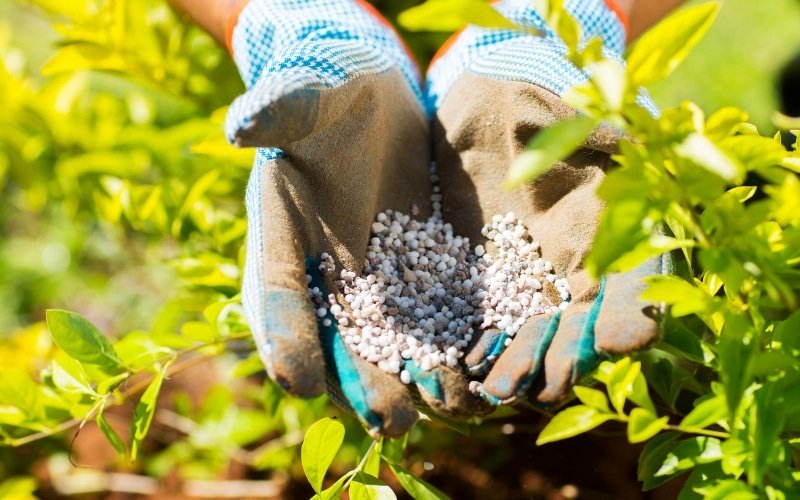
Aglaonema is one of the easiest plants to care for. Here are some tips to ensure it thrives in your home:
Soil
:max_bytes(150000):strip_icc()/GettyImages-1437771673-62276b35b2e9464a944d0c689e0f5889.jpg)
Aglaonema plants do best in well-draining, loamy soil. Loam soil is ideal because it’s a mixture of sand, clay, and humus, offering good aeration to the roots and preventing root rot. Aim for a slightly acidic pH between 5.5 and 6.5.
Watering

While Aglaonema is pretty adaptable, it’s important not to overwater. The soil should be allowed to dry out between waterings. You’ll want to make sure that the top few inches of soil are dry before watering again. During the growing season (spring and summer), you’ll water a bit more often, but cut back in the cooler months.
Remember to water the entire root system, not just the top few inches. It’s also a good idea to check the humidity in your home, as Aglaonema likes a bit of moisture in the air.
Sunlight

One of the best things about Aglaonema is that it can thrive in low light conditions. While it can tolerate some direct light, avoid placing it in harsh, direct sunlight, as this can scorch its leaves. A spot with bright, indirect light is ideal for most varieties.
The more variegated varieties, such as Watermelon Unakite or White Calcite, may need a little more light to maintain their vibrant colors. Temperatures between 70°F and 72°F (21°C–22°C) are ideal for these plants.
Repotting

Aglaonema doesn’t need to be repotted very often, but you should consider repotting if the plant has outgrown its container or if you see the roots crowding the pot. Repotting is typically done every 12 to 18 months. The best time to repot is during spring or summer, and you’ll want a pot that’s 2–4 inches larger than the current one.
Fertilizing
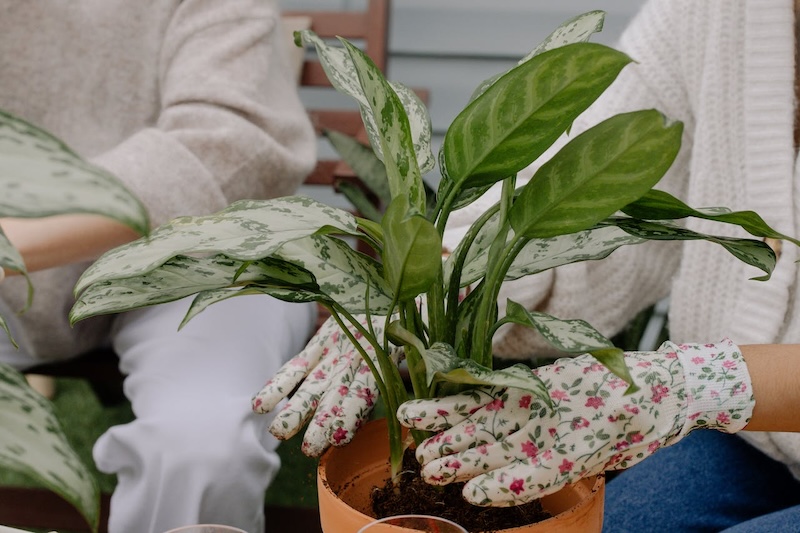
Feed your Aglaonema once every 6–8 weeks during the growing season (spring and summer). Use a balanced liquid fertilizer, such as Miracle-Gro, following the instructions on the package. Avoid fertilizing too much, as this can lead to overgrowth and weak plants.
Propagation

Aglaonema is fairly easy to propagate through stem cuttings or root division. For stem cuttings, cut a 5–10 inch section from a healthy plant and remove the lower leaves. Dip the cut end in rooting hormone and plant it in a well-draining mix. Keep it in a warm, humid environment with indirect light, and in 30–45 days, it should start rooting.
Root division can also be done when repotting. Simply separate the plant at the roots and plant the new section in its own pot.
Troubleshooting Aglaonema

While Aglaonema is generally easy to care for, here are some issues you might encounter:
- Leaves Dropping: This is most commonly caused by overwatering, so check the soil moisture. Ensure the plant isn’t waterlogged, and let the soil dry before watering again.
- Yellowing Leaves: This could indicate too much water or too little light. Try adjusting watering habits or moving the plant to a spot with more indirect sunlight.
- Pests: Aglaonema is relatively pest-resistant, but it can occasionally attract mealybugs, spider mites, or aphids. If this happens, treat the plant with neem oil or remove pests manually.
Is Aglaonema Toxic to Pets?

Yes, Aglaonema is toxic to pets, especially dogs and cats. The plant contains calcium oxalate crystals, which can cause a reaction if chewed. Symptoms of poisoning include drooling, nausea, and difficulty breathing. If you suspect your pet has eaten any part of the plant, take them to the vet immediately.
Frequently Asked Questions (FAQs) About Aglaonema
1. How much light does an Aglaonema need?
- Aglaonema thrives in low to moderate indirect light, making it perfect for areas with less natural sunlight. However, it can also tolerate some direct sunlight, though prolonged exposure may scorch its leaves.
2. How often should I water my Aglaonema plant?
- Water your Aglaonema when the top 1–2 inches of soil feel dry. It’s important not to overwater, as this can cause root rot. Generally, watering once every 1–2 weeks should suffice, depending on the environment.
3. Can Aglaonema grow in low light conditions?
- Yes, Aglaonema is well known for its ability to thrive in low light conditions, making it an excellent choice for indoor spaces that don’t get much natural sunlight.
4. How do I know if my Aglaonema is getting too much light?
- If your Aglaonema’s leaves start to yellow or develop brown tips, it could be a sign that it’s receiving too much direct sunlight. Try moving it to a location with more filtered light.
5. How do I fertilize my Aglaonema plant?
- Aglaonema benefits from monthly feeding during the growing season (spring and summer). Use a balanced liquid fertilizer diluted to half strength. Avoid fertilizing in the fall and winter, when the plant is dormant.
6. What type of soil is best for Aglaonema?
- Aglaonema prefers well-draining potting soil. A standard houseplant mix works well, but you can add perlite or sand to improve drainage.
7. How do I propagate Aglaonema?
- Aglaonema can be propagated by taking cuttings of its stems or by dividing the plant during repotting. Make sure each cutting has at least one node and place it in a small pot with moist soil until roots form.
8. Why are the leaves on my Aglaonema turning yellow?
- Yellowing leaves can be a sign of overwatering or too much direct sunlight. Ensure the soil drains well and the plant isn’t left in direct sun for long periods. Also, check that your watering routine isn’t too frequent.
9. Is Aglaonema safe for pets?
- Unfortunately, Aglaonema is toxic to cats and dogs if ingested. Keep the plant out of reach of pets, or choose non-toxic plants if you have curious animals at home.
10. How do I clean the leaves of my Aglaonema?
- Wipe the glossy leaves of your Aglaonema with a damp cloth to remove dust. This will help the plant absorb light more efficiently. Avoid using any harsh chemicals on the leaves.
Conclusion
Aglaonema is a fantastic choice for both beginner and seasoned gardeners, thanks to its low-maintenance care requirements and beautiful foliage. With its ability to thrive in low light and tolerance for neglect, it’s a perfect plant to brighten up any indoor space. By following the simple care tips provided, you can enjoy a vibrant and healthy Aglaonema for years to come. Happy gardening, and may your Aglaonema bring beauty and joy to your home!

